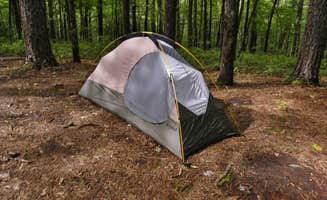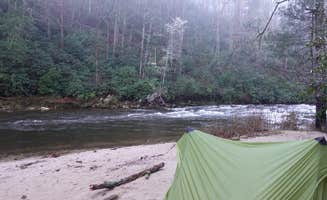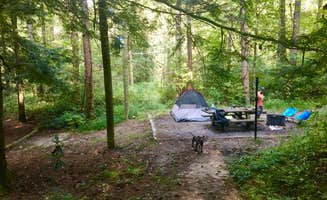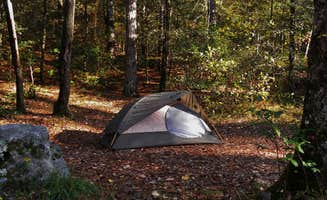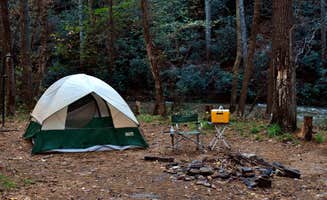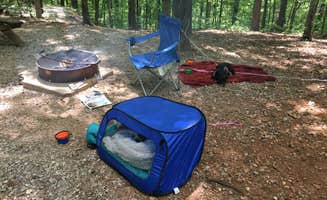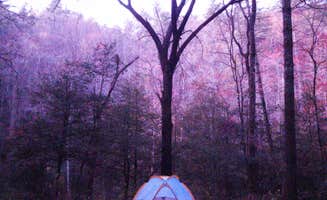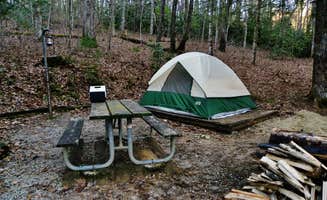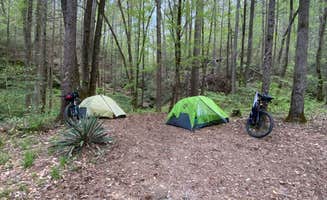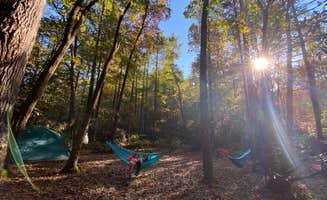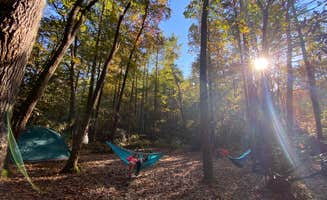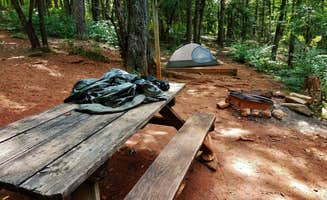The primitive campgrounds around Tamassee, South Carolina offer solitude within Sumter National Forest's dense woodlands at elevations ranging from 1,200 to 2,000 feet. Most dispersed sites maintain cooler temperatures than surrounding lowlands, with summer averages 5-10 degrees below nearby urban areas. Tent camping options vary from riverside locations to secluded forest settings accessible via rugged forest service roads.
What to do
Trout fishing access: At King Creek Primitive Campsites, campers can access prime fishing spots along the Chattooga River. The river serves as the state line, making both South Carolina and Georgia fishing licenses valid. One visitor noted, "Fishing license is required but both SC and GA are acceptable as the river is the state line."
Waterfall hiking: From Burrells Ford, a moderate 0.5-mile trail leads to King Creek Falls. A camper mentioned, "Short hike to King Creek Falls." For more adventurous hikers, trails connect to the Foothills Trail system with limestone pools as rewards. "Adventurous hiking can lead to waterfalls, limestone pools and plenty of seclusion."
River swimming: The Chauga River at Grapevine Campground offers swimming opportunities during warmer months. A camper shared, "We brought some great floaties and hung out in the water during the day." The river's clear water and sandy sections create natural swimming areas for cooling off.
What campers like
Complete solitude: Sumter National Forest Big Bend Campground offers extreme isolation for campers seeking distance from others. A visitor confirmed this remoteness: "Got here right before dusk and it was complete solitude. Packing up in the morning and a fisherman showed up to walk down the hill. Otherwise, saw no one."
Sound of moving water: Campsites positioned along creeks and rivers create natural sound barriers from other campers. At Blue Valley Camp, one camper appreciated the "sounds of moving water all around." Sites near water tend to fill first during peak seasons.
Spacious, private sites: The dispersed camping areas feature considerable distance between sites. At Blue Valley Dispersed Camping, a visitor appreciated that "Beautiful, large, private sites. You couldn't see our site from the road, huge site, lots of woods surrounding for kids to play and explore, right beside a gorgeous large creek."
What you should know
Vehicle requirements: Many roads leading to dispersed campsites require high-clearance vehicles. At Big Bend Campground, a camper noted the difficult access: "It is accessible only by driving on a one and a half mile forest road that is rough with lots of rocks and pot holes. You cannot drive to this site with a low clearance sedan."
Weather preparation: Temperature fluctuations can be extreme, with nighttime temperatures dropping significantly even in summer. One winter camper at Ammons Branch Campground warned: "I do not recommend staying there in the winter unless you are ready for cold nights."
Campsite terrain: Finding level ground for tents can be challenging. A visitor to Big Bend observed: "Most of the places are not level. I managed to find one of only two level places to set up my tent."
Tips for camping with families
Bring water hauling equipment: With no drinking water available at most sites, families need to transport their own water. A wagon or cart helps move supplies from parking areas to campsites. For Burrells Ford, a visitor suggested: "I did not camp here yet. I start my hike here. Have to say I can not wait to camp here. It is a bit of a walk down a rode to get here and saw a Father and son taking there stuff down with a hand truck which is a very good idea."
Explore during off-peak times: Avoid holidays and summer weekends when possible. A camper at Burrells Ford observed: "During peak season (summer, Spring Break) it will be slightly crowded, but there's usually still room to camp and it doesn't normally get rowdy or loud."
Choose sites near streams for entertainment: Children enjoy exploring creek beds and small streams. At Blue Valley Dispersed Camping, a parent reported: "Almost all near a creek of some sort. Hiking trails near by. No facilities. Room for larger groups ~40 people max for the biggest site ~6 for the smallest."
Tips from RVers
Length restrictions: Most dispersed camping areas can only accommodate small RVs or trailers under 20 feet. At Blue Valley Camp, a camper noted the limitations: "Drive in sites are spaced a really nice distance from one another. Challenging to fit a larger RV."
Limited turning space: Forest roads typically have few turnaround points and passing zones. If you encounter another vehicle, backing up long distances may be necessary. Narrowness can be problematic as "you have to drive two and a half miles down a forest road" to reach many sites.
Scout first without trailer: Due to challenging road conditions, scouting potential sites before bringing your RV is recommended. One camper warned about Jocassee Gorges, "Not an easy place for first timers to get into. No swim access to the lake. Small campground loop."


